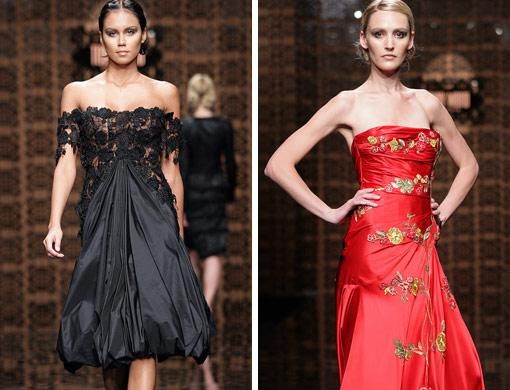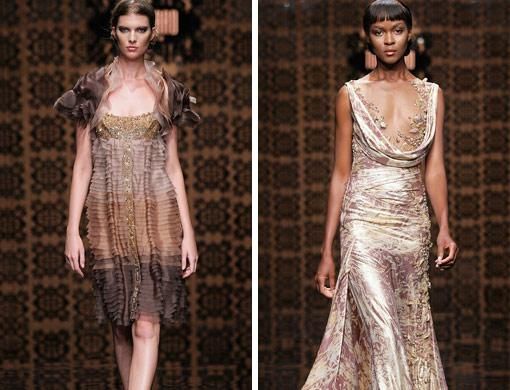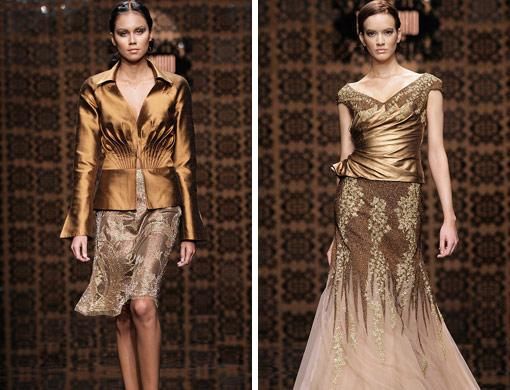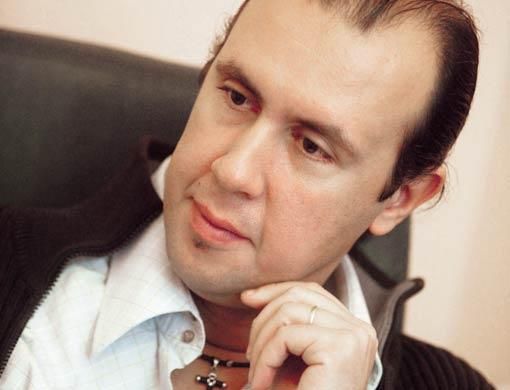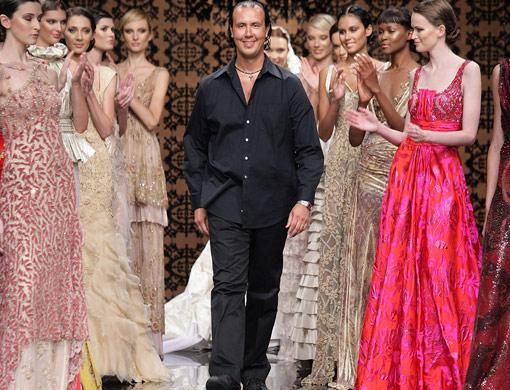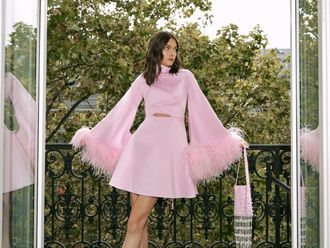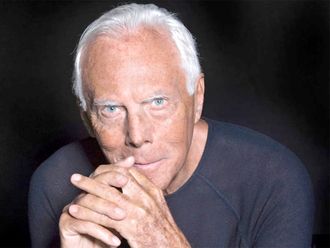Tony Ward is proud to be Lebanese. This 35-year-old fashion designer, married to an Italian woman and father of four, chose to return to his homeland 10 years ago.
The son of a Beirut dressmaker, Ward, who studied in Paris, learning the trade in the capital of women's fashion, still works in his father's atelier in Achrafieh in the heart of Beirut. His haute couture dresses can be seen on the catwalks of Italy, the US and Russia.
To Ward, an elegant woman is one who is at ease with herself, and a good designer is one who can make every woman look good.
Tell as about your job.
Being a designer is not an easy job. You don't go back home every night and you always have to travel. Sometimes you spend a lot of white nights. And you always have to work on yourself to evolve.
What is your source of inspiration?
Everything inspires and interests me. I love to look at things with the eyes of a child. I just live the moment. I'm scared of repeating myself. I'm always pushing myself to see and discover new things. I read a lot. I love languages. I know Arabic, French, English and Italian, and I have started to learn Russian. I would like to start Spanish as well. Travelling is also an important source of inspiration. I never stop working on my personal culture.
Where have you held your fashion shows lately?
I always participate in Rome fashion week. Rome is the Italian capital of haute couture, while Milan is the city where prêt-à-porter shows take place. Until now, I don't have a collection of prêt-à-porter.
I work in haute couture and in something called prêt-à-couture, which is less expensive than haute couture. It's a very private collection that I sell only in very private shops in the US. The prêt-à-couture is the new trend in fashion. In the US my dresses are sold in Florida, Texas and Washington. I have fashion shows in Rome, Palm Beach and Moscow.
Why Moscow?
For the past year I have presented my collections in the Russian capital. It all started with the July 2006 war in Lebanon. On July 11, one day before the war, I had my fashion show in Rome.
On the 13th, Beirut airport was bombed. I found myself stuck in Italy with the staff and the dresses. We learned several days later that it would be several weeks before we could return to Lebanon. We had to do something about it.
The only solution I had was to show the collection somewhere else. I went to Moscow and stayed there three weeks with my staff. I presented my first fashion show in the Russian capital on September 11, 2006. In April 2007, I opened an atelier in Moscow. Russia is now the fashion world's El Dorado.
What kind of women do you design your clothes for?
My clothes are aimed at an international clientele. The woman I design my dresses for cannot be too European or too Oriental. She might be a Western client who likes the sophisticated aspect of the East or an Oriental client who is looking for European lines. That's why I have clients from places as varied as Saudi Arabia, Italy, the US, Russia or Azerbaijan.
I have a lot of clients in Baku… Let's say that 60 per cent of my clothes are sold in the Arab countries and 40 per cent elsewhere.
Why do you think Lebanese designers are becoming popular around the world?
The Lebanese are traditionally service providers. We also have a culture regarding fashion and know-how in this field.
The most important thing is that we are less rigid than our European colleagues, which means that we adapt the initial creation to the clients' bodies. European designers refuse to do so. For them the initial model is sacred — pure art — so they would never modify it.
It's easy to dress a beautiful woman who is tall and thin. The challenge is to make a woman who is tall and fat look good in a dress. If the designer lacks the right skills he will make a beautiful young woman look ridiculous.
A couturier should know how to advise a client, make the right decision when choosing the model and the material and be able to modify a dress in order to make it suit the client better.
Define your style.
Delicate and essential; the line is elegant and refined without being exaggerated. My creations accompany the woman from the moment she wakes up until she goes to bed. That's why suits comprise about 40 per cent of my haute couture collections.
Define an elegant woman.
She is a woman who is at ease with herself. She knows what fits her. She is not a fashion victim, but at the same time she is not insensitive to fashion.
Your favourite colours?
I love black and all pink shades. Sometimes I line a black dress with pink. You don't have to show all that you have to be elegant.
Sometimes, for example, I will embroider the inside of a dress just for the feeling it can convey to the wearer. Haute couture is not about showing things; it's about feeling elegant and good about yourself.
What about your new projects?
At the moment I'm preparing to launch a prêt-à-porter line. I'll be moving soon to a bigger atelier in Achrafieh. I also was chosen with 11 other fashion designers in Milan to create a Christmas tree. This tree was auctioned in December to help finance a cancer hospital.
Father to son
My father has been a dressmaker in Beirut since 1960. I grew up in this same atelier," says designer Tony Ward, who started medical school in 1988. A year later, in Paris he met the Lanvin fashion house manager who saw his sketches and introduced him to French designer Claude Montana.
Ward remained in Paris for seven years. For three years he worked for Lanvin with Montana during the collections, and at the same time he studied to be a designer at La Chambre Syndicale de Haute Couture. Then he spent two years atDior with Gianfranco Ferré and at Chloé with Karl Lagerfeld.
"I was a grant holder. My studies were financed by Lanvin. My parents didn't want me to become a dressmaker," he says. "Now my father is very proud of me. He still works in the atelier. We always need his skills. He has a perfect technique. Many times, when something doesn't go well for clients with difficult bodies, it's my dad's experience that saves us. I know he is very happy for me. We never talk about it. I just guess."
Twenty people work in Ward's haute couture atelier. He also employs 11 artisans who are specialists in embroidery.
The Eclipse Woman
Tony Ward named his latest autumn-winter collection The Eclipse Woman. For the designer this special moment in nature conveys a lot of things.
"It unifies the Earth, the moon and the sun. The colours go from black to white with a lot of bronze, pink, yellow and silver," he says.
There are many eclipses visible at various times around the world, but we don't get to see all of them, he says. "A woman lives through lots of eclipses too."


